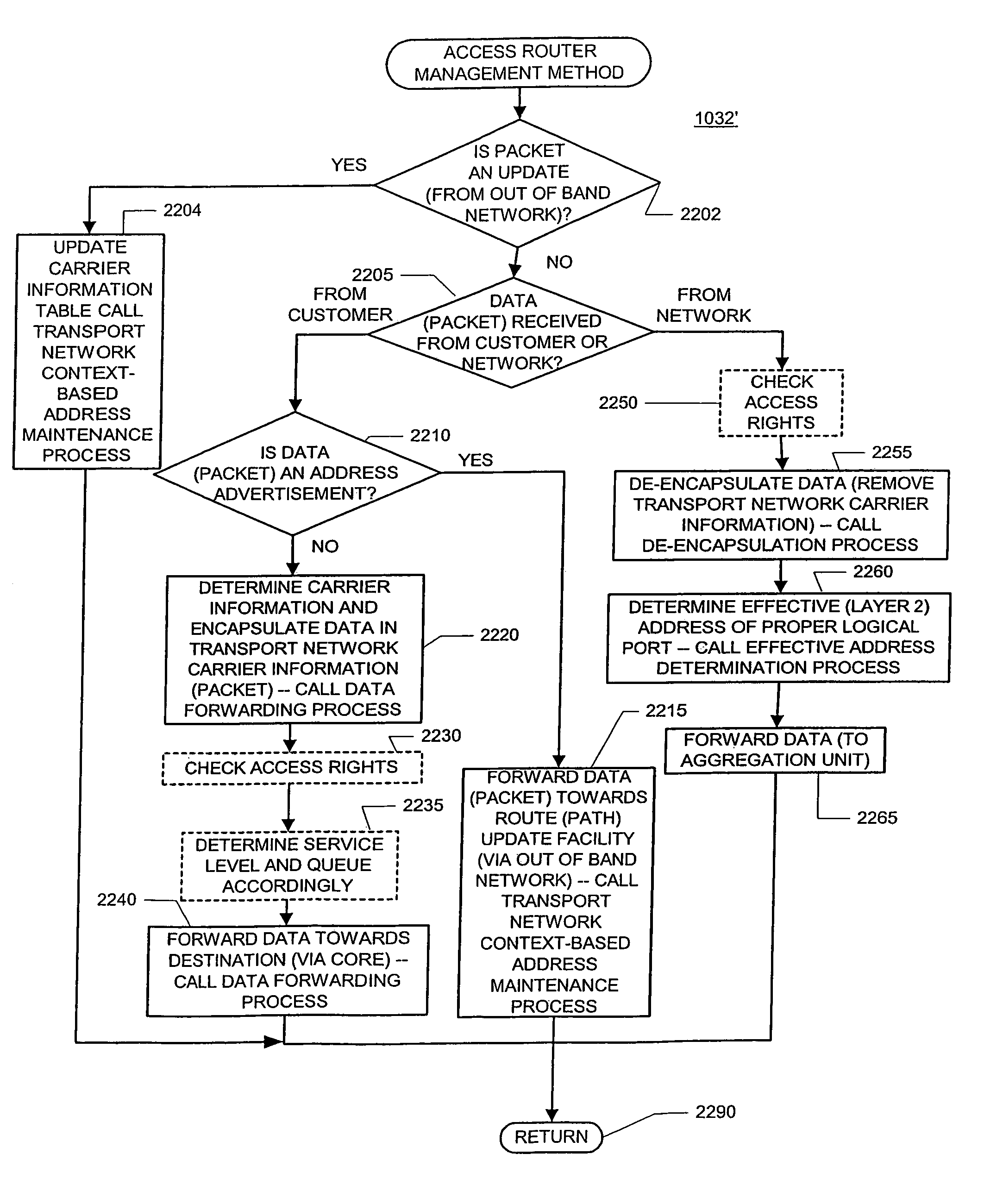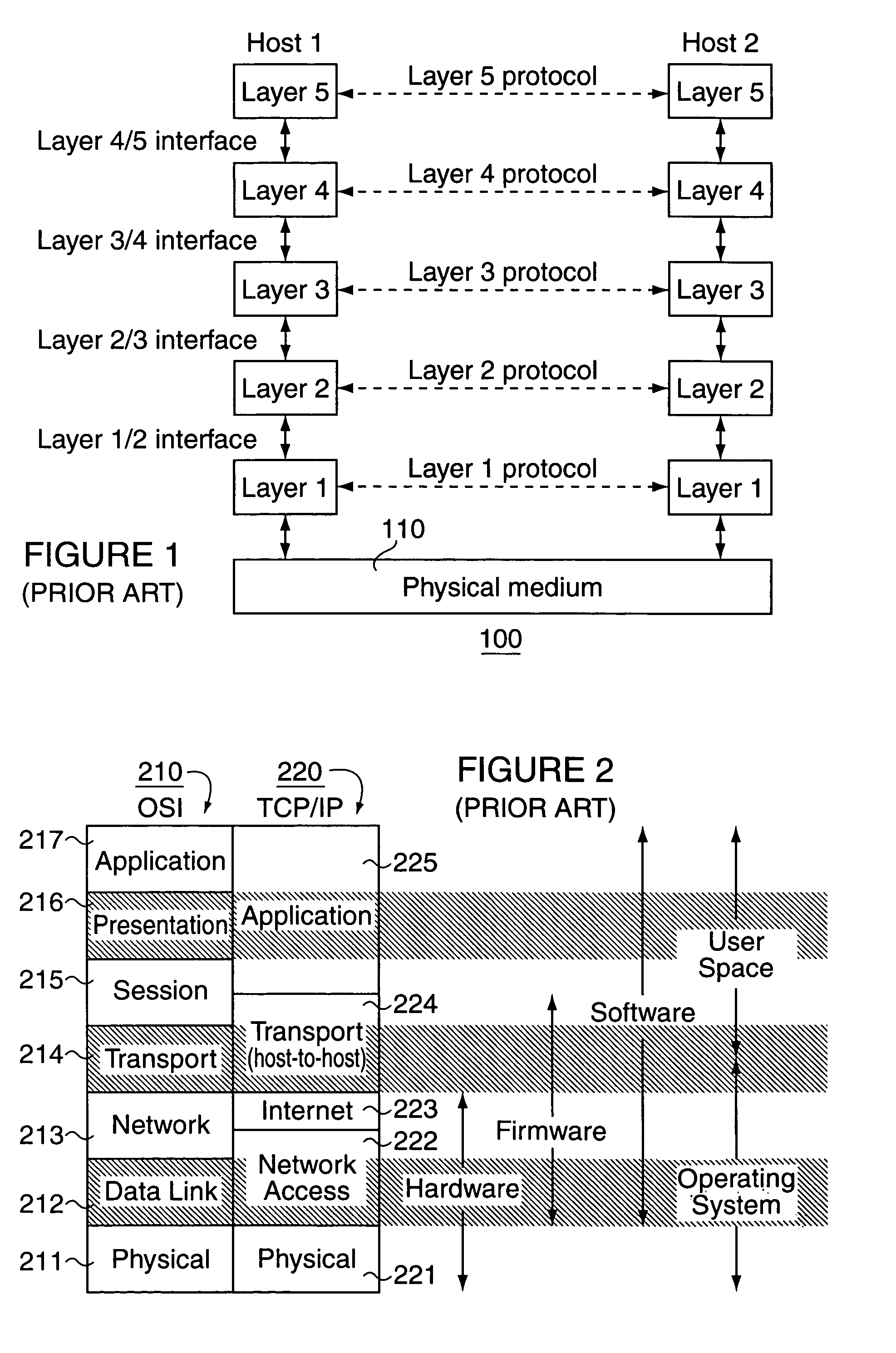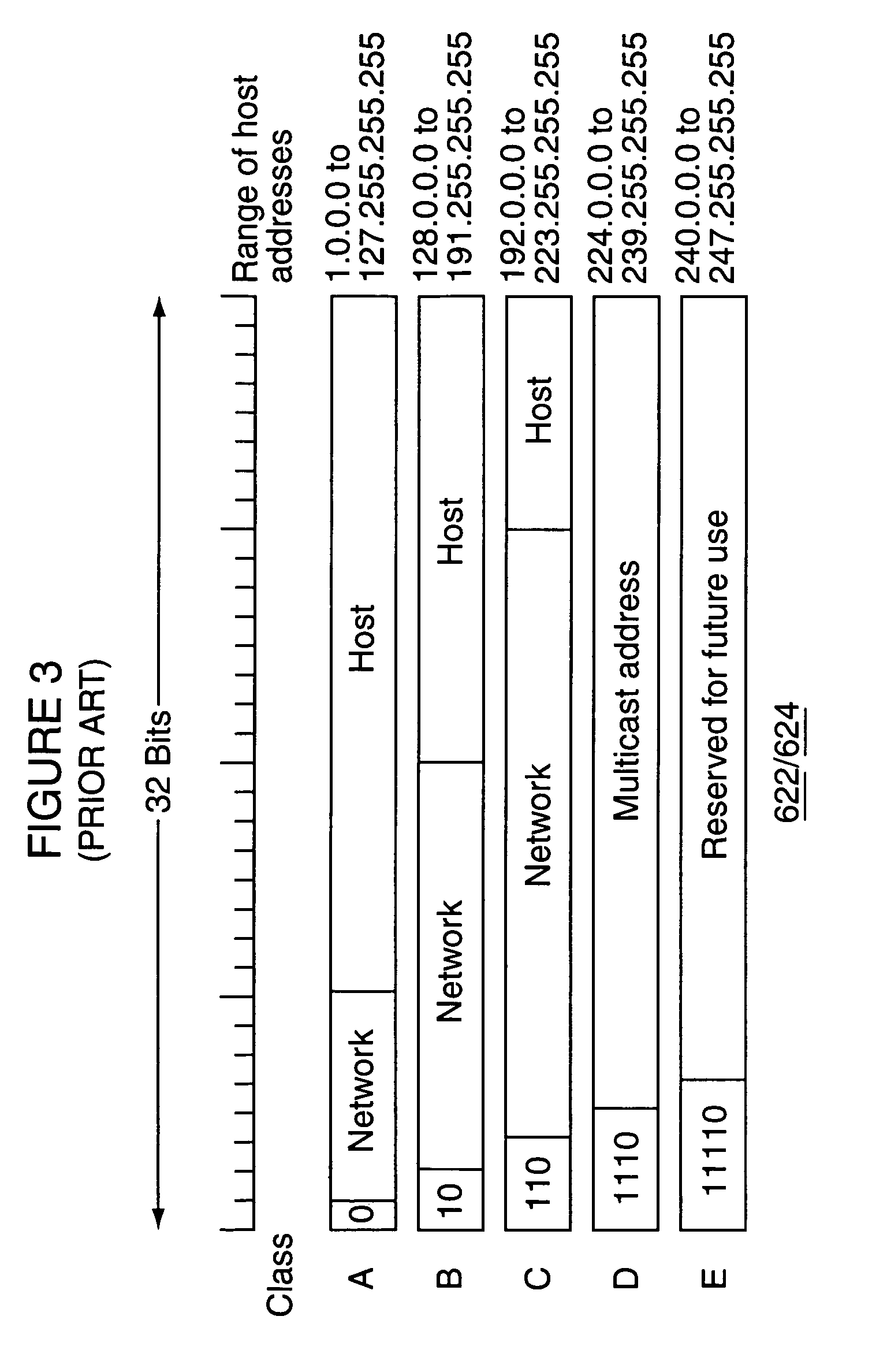Simple peering in a transport network employing novel edge devices
a transport network and edge device technology, applied in data switching networks, multiplex communication, digital transmission, etc., can solve the problems of introducing various kinds of incompatible public transport networks, unable to fully integrate dedicated wans and existing transport networks, and a large number of sites that will not have “full meshed” networks
- Summary
- Abstract
- Description
- Claims
- Application Information
AI Technical Summary
Benefits of technology
Problems solved by technology
Method used
Image
Examples
Embodiment Construction
[0116]The present invention involves novel methods, apparatus and data structures for providing a transport network, for permitting customers to access the novel transport network, for permitting data to be properly forwarded across the novel transport network and to a destination customer device, and to help provide certain services. The following description is presented to enable one skilled in the art to make and use the invention, and is provided in the context of particular applications and their requirements. Various modifications to the disclosed embodiments will be apparent to those skilled in the art, and the general principles set forth below may be applied to other embodiments and applications. Thus, the present invention is not intended to be limited to the embodiments shown and the inventors regard their invention as the following disclosed methods, apparatus and data structures and any other patentable subject matter.
[0117]In the following, an exemplary environment in...
PUM
 Login to View More
Login to View More Abstract
Description
Claims
Application Information
 Login to View More
Login to View More - R&D
- Intellectual Property
- Life Sciences
- Materials
- Tech Scout
- Unparalleled Data Quality
- Higher Quality Content
- 60% Fewer Hallucinations
Browse by: Latest US Patents, China's latest patents, Technical Efficacy Thesaurus, Application Domain, Technology Topic, Popular Technical Reports.
© 2025 PatSnap. All rights reserved.Legal|Privacy policy|Modern Slavery Act Transparency Statement|Sitemap|About US| Contact US: help@patsnap.com



